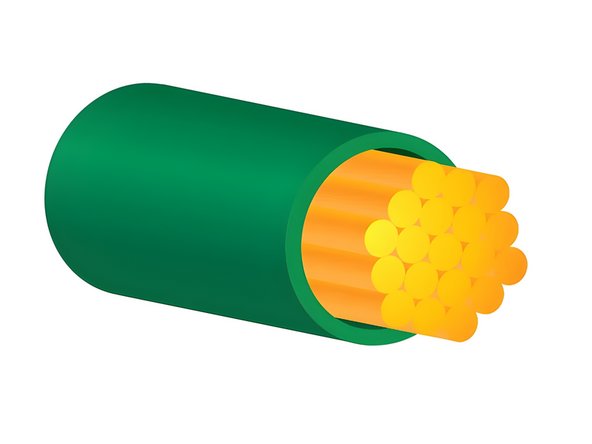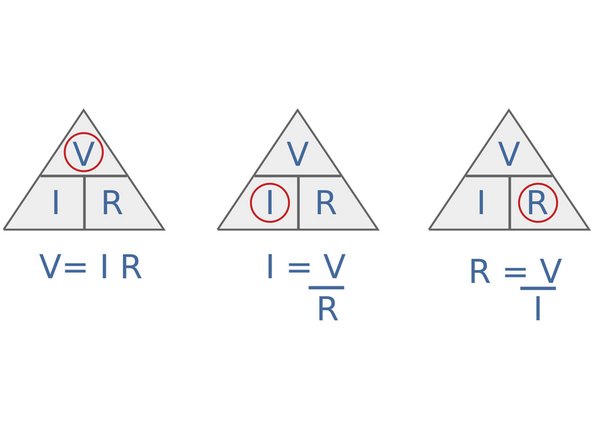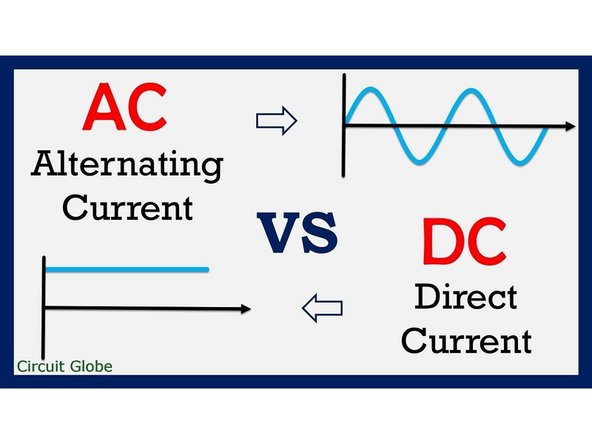-
-
A circuit is a closed loop through which electrons can travel.
-
There are a few conditions that must be followed for a circuit to function:
-
The path must be a closed loop. If the loop is open, then no electricity can travel. This works similarly to a road or highway. If the road were to abruptly stop then no cars could move and nothing would happen.
-
There must be a potential energy difference in the circuit, more commonly known as voltage in electronics. If there is no energy difference in the circuit then nothing will happen in the circuit.
-
Circuits can perform a variety of functions, primarily through the conversion of electrical energy to other forms of energy. Some examples of this are motors, which convert the energy into mechanical energy, and light bulbs, which convert the energy into light and thermal energy.
-
-
-
Voltage is the potential energy difference that pushes electrons through a circuit, enabling them to do work.
-
Voltage can be thought of as the pressure in a circuit.
-
Since electrons are negatively charged the actual flow of electrons is from negative to positive within a circuit, but in practice we say electricity flows from positive to negative for simplicity.
-
Common sources of voltage are batteries, generators, and solar cells. They each convert different forms of energy to electrical potential energy in different ways
-
-
-
Current is the rate at which electrons flow in a circuit
-
Current can be thought of as flow speed or rate.
-
Current is measured as coulombs per second, but a more conventional unit for current is the Ampere or Amp (A) where 1 A = 1 C/s.
-
The calculation is similar to measuring water flow: how many gallons pass a single point in a pipe in 1 minute (gallons per minute, or GPM).
-
-
-
Resistance is a measure of opposition to the current flow in an circuit.
-
This can be thought of as the width of a pipe through which water flows. A small pipe would have a high resistance, not allowing for much flow, while a wide pipe would have a low resistance, allowing for greater flow.
-
The conventional unit for resistance is the ohm, often denoted as Ω.
-
Most materials fall into one of two categories: conductors (copper, iron, gold), materials with low resistance, and insulators (rubber, wood, glass), materials with high resistance.
-
The relationship between voltage, current and resistance can be described as the equation V = I * R (I is current).
-
This is also analogous to water flow. A Higher pressure (V) will result in a higher flow rate (I), or have to be resolved with a smaller pipe to maintain the same flow rate (R).
-
-
-
Power is the rate at which energy is transferred in a circuit.
-
Power (P) is measured in joules per second, but a more common name for power is the Watt (W) where 1 W = 1 J/s
-
Another important relation is P = I^2 * R which can also be derived from everything previously mentioned. Since V = I * R we can plug that into the equation P = I * V to get P = I^2 * R
-
-
-
AC stands for alternating current and commonly represents an electrical current that periodically reverses polarity. Most AC signals are sinusoidal.
-
AC is most commonly used in power transmission due to its lower transfer losses to heat and other factors.
-
DC stands for direct current where the electrical current flows only in one direction and at a constant rate.
-
DC is more commonly used in most smaller electronics and logic processing in computers.
-
Cancel: I did not complete this guide.
4 other people completed this guide.









